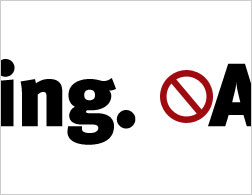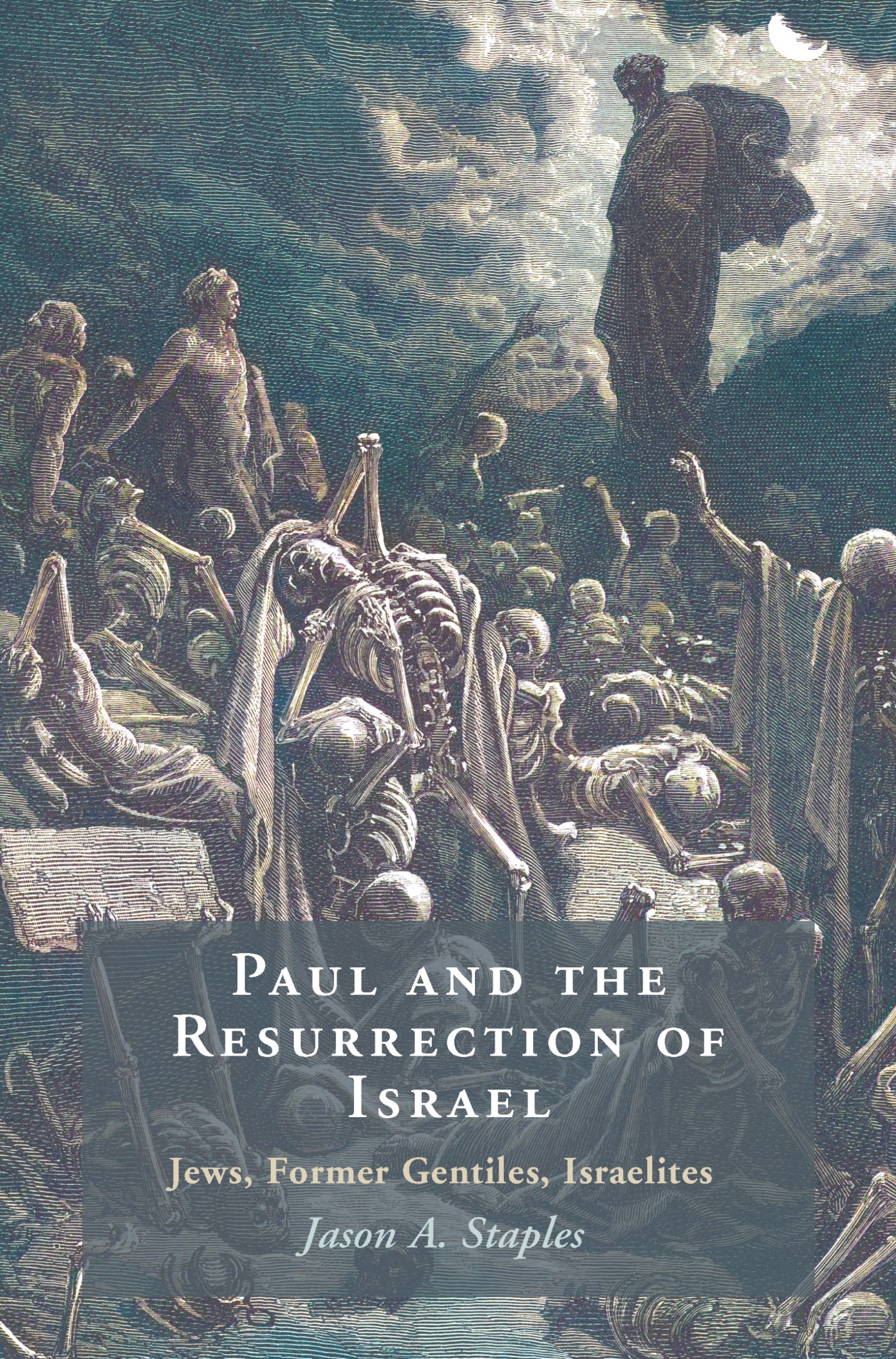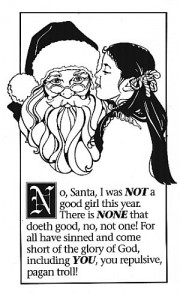Slate has a nice piece up on why it’s totally, completely wrong to double-space after a period. I get this all the time in documents I edit—I usually just do a quick find/replace to eliminate all double-spaces from the document at the very start. I remain continually surprised at how many (even those who learned to type in the last decade) commit this typography foul, a holdover from the days of typewriters with monospaced fonts. Please, for the sake of humanity, stop doing this, people—at least eliminate the spaces via find/replace after you type the document! (FULL DISCLOSURE: I was taught to put two spaces after a period when I learned to type also; it was a real pain to unlearn it a few years back.)

Perhaps more interesting is how several teachers cited in the article explained that they teach/require their students to put two spaces after a period even though they know it’s wrong. Why? Because they learned it that way themselves. Remarkable. So not only are they showing themselves to be unwilling learners, they are willing to teach the wrong thing just because it’s more comfortable for them. That pretty nearly sums up the definition of an unwise person and bad teacher; unfortunately, it’s how many teachers (and parents) choose to educate the next generation.
Yes, I know it’s just typography, but the larger point is worth making. The capacity and willingness to receive correction is a first step to becoming competent and wise. Or, put differently, the first step in being correct is actively seeking and accepting correction. If we stubbornly stick to what’s comfortable or “the way we were [first] taught,” we’ll be on the wrong side of a lot of things over the course of our lives—and worse, we’ll pull others along with us. As the proverbs say: הוֹכַח לְחָכָם וְיֶאֱהָבֶךָּ “correct a wise man and he will love you” and אֹהֵב מוּסָר אֹהֵב דָּעַת וְשֹׂנֵא תוֹכַחַת בָּעַר “Whoever loves correction loves knowledge, but the one who hates rebuke is stupid.”
We should all make this a rule of life: rather than eschewing correction and resting comfortably in what (we think) we already know, we should actively and tirelessly seek correction so that we can truly know—and only then can we, as wise people, instruct others. And by no means should we ever teach the next generation to do what we know to be wrong, simply because it’s how we first learned it.
UPDATE: This subject has apparently hit a nerve across the web, including some pretty witty responses like the following: “everyone has a right to their [sic.] beliefs,” which (despite the number disagreement in its subject line) nicely critiques the Slate article for sloppy argumentation. (Yes, it would have been better had he mentioned more empirical arguments like the fact that double-spacing wastes precious space in print, etc.)



14 Comments. Leave new
I think the point of “that’s the way I was taught” is somewhat different for this issue. When I learned to type–back in the 80s–two spaces was the rule, and after hours and hours of practice it has become so thoroughly ingrained in my muscle memory that it is simply not worth relearning this automatic action for what is essentially a typographical aesthetic reason.
Besides, the issue ought to irrelevant to all but typesetters. Computers can decouple the user’s input and the text’s appearance. There is no reason why software should not “do the right thing” typographically in response to a user’s input, whether it is one or two spaces after a period. HTML already works that way, and it should not be evident how many spaces I typed after every period.
I was always taught to type two spaces at the start of a new sentence. I’m now in the difficult and painful process of eliminating that deeply ingrained habit. It’s usually the case that I must go back and delete extra spaces after composing something…
Agreed on the difficulty of re-learning on this one because of the level of automaticity attached to it as a part of typing. I was also taught the two-space rule when I learned to type (also in the 80s), and it was a real pain to un-learn it a few years back.
What I’m really criticizing at the end, though, is not so much those who continue to type “the way they were taught” but those who continue to teach other people to do it the wrong way even though they know it’s wrong. I can understand still doing it that way (it was hard enough for me to unlearn); what I don’t understand is teaching others to do it that way knowing it’s wrong. That is the smaller point that illustrates a larger problem in the way we so often educate. (Stephen, you know how this works even in our field—we continue to teach outdated and discredited things at the introductory level all the time, simply because that was part of what we had to learn. This should change.)
Stephen, you also make a good point about how easy this would be to fix in terms of input/output. At the very least, I advocate that people use find/replace to eliminate the double spaces in their documents before sending them somewhere important.
Your points are well taken, Jason, and I assume that “sending them somewhere important” includes submitting a paper to Prof. Obvious. 😉 (Though I would prefer my word processor, not just HTML, to “do the right thing” with them.)
Baylor University requires that I use two spaces between sentences in my dissertation. I think it is more a matter of preference. Does one put a period before or after quotes marks? It depends if you are using the British or American system. What is the correct way to format bibliographies and footnotes. It depends on whether you are using Chicago, SBL, MLA, APA style etc. I don’t think there is one “right” way.
It’s unfortunate that Baylor has chosen to do that (a legacy requirement from when dissertations were turned in from typewriter-manuscript). No style guide—not a single one—upholds the two-space rule. There is a “right” way, and there has been for a while. But universities, where the requirements are often extremely slow to change, may continue to require such things, despite the fact that it’s contrary to every single style guide now in existence.
Not only does Baylor require it, but I know someone who typed his whole dissertation using only one space after periods, and the graduate school forced him to go back and use two spaces throughout the whole document.
Yikes. What a pain. Good thing he could just go back and do a find/replace for “period + space” and make the substitution. But still a pain, especially if he had already printed the copies, etc.
Side note: Microsoft Word 2010, after using a spelling and grammar check, displays that it is okay to type one space, two spaces, or NO spaces after the period. Someone have a comment for this? Guess Bill Gates is wrong…Just saying. Also, I believe the MLA style of writing is taught in college, at least it was when I graduated in 2005. Thus, the one period standard is being taught to the new graduates, I assume? From above comments, I would say that is not the case.
1) Just because something is allowed by MS Word’s spelling/grammar check doesn’t make it acceptable (or vice-versa).
2) More than just the MLA is “taught in college.” It very much depends on the department. The UChicago/Turabian style is standard in many departments (it is generally more rigorous).
3) Students are generally told to follow a given style guide, but style guides are rarely actually taught in any class. MLA, Turabian, and every other style guide advocate one space following a period, but how many students do you know who have actually checked a style guide for anything of the sort? Did you when you were in college?
Everyone’s taking this way too serious! Lighten up! Here’s food for thought at the following website: http://www.theatlantic.com/culture/archive/2011/01/you-can-have-my-double-space-when-you-pry-it-from-my-cold-dead-hands/69592
Oh, and to Jason Staples…yes, I did use the MLA style guide in college and was graded on following it. Yet, I never had to reference for spaces at the end of the sentence because spaces after a period were never an issue (until now for some odd reason–too much time on one’s hands, I suppose). Finally, everyone knows that every college, department, and professor’s requirement are different. No new news there! But thanks for posting what you know.
Nice. I especially liked the following comment (from a poster named Meng Weng Wong) at the post linked through the article you link:
“On paper, this is easy when one uses the right tool for the job: emacs for editing and InDesign for typography, plus some scripted preprocessing in between.
But only the lucky few experience such Platonic purity. In the degenerate, two-in-one shampoo-and-conditioner world through which the masses thrash and bellow, Microsoft Word deserves blame as a blunt instrument that muddies thought and smears ugliness on the page.”
Ha. Outstanding.
Funny enough, the 144-character limit on Twitter has been one of the most efficacious tools in helping me internalize ditching that extra space following a full stop 😉
And just when a new generation is emerging who learned to “type” on a keyboard and disregarded the 2-spaces rule, APA Publication Manual 6th Edition now says:
Chapter 4: The Mechanics of Style
Punctuation—return to two spaces after the period at the end of the sentence recommended for ease of reading comprehension.
. . . a recommendation I (as a copy editor and layout designer) will readily ignore, as the “ease of reading comprehension” is unfounded.